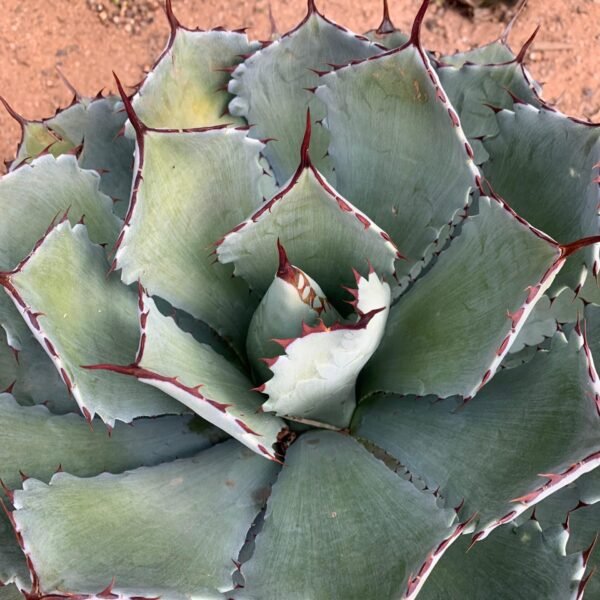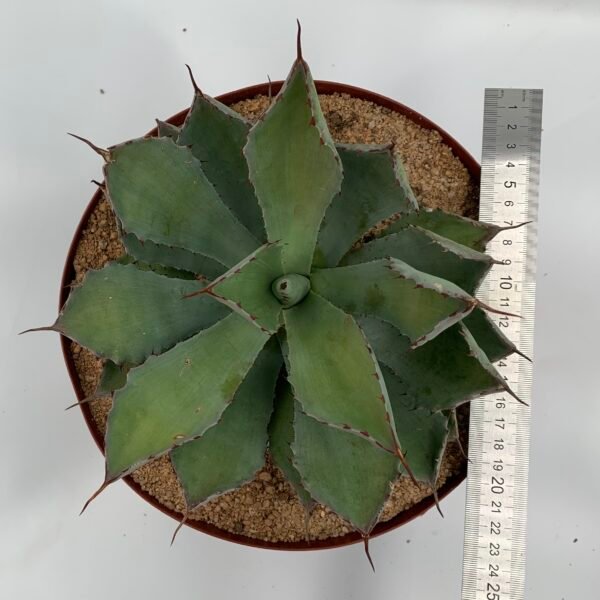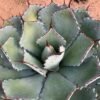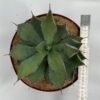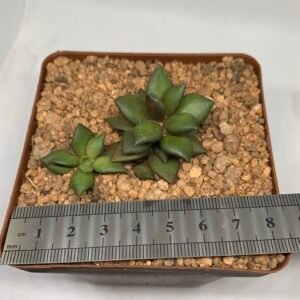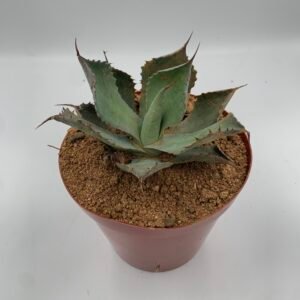Common names: Butterfly Agave, Agave potatorum
Family: Asparagaceae
Agave potatorum, commonly known as the Butterfly Agave, is a compact, symmetrical agave species prized for its elegant rosette form and striking leaf coloration. Its sculptural shape and manageable size make it a popular choice for containers, rock gardens, and modern succulent displays.
Origin and Habitat
Native to the semi-arid regions of Oaxaca and Puebla, Mexico, Agave potatorum grows naturally on rocky slopes and open hillsides. It is well adapted to dry, sunny environments with occasional rainfall and excellent drainage.
Plant Description
This small to medium-sized agave forms a perfectly rounded rosette of broad, gray-green leaves that curve slightly inward, resembling butterfly wings. Each leaf is edged with small, reddish spines and tipped with a sharp terminal spine. Mature rosettes reach about 40 cm tall and 60 cm wide. When fully mature, the plant produces a tall flower spike bearing greenish-yellow blooms, after which the mother rosette dies, leaving behind offsets to continue its growth cycle.
Care Instructions
Light
Prefers bright light to full sun. Indoors, place in a sunny spot or under strong grow lights to maintain its color and compact form.
Watering
Water sparingly. Allow the soil to dry completely between waterings, especially in cooler months. Overwatering can cause root rot.
Soil
Use a fast-draining cactus or succulent mix. Adding coarse sand, pumice, or gravel enhances aeration and drainage.
Temperature
Ideal range is 18°C–30°C. Can tolerate brief cold spells down to around 5°C if kept dry but should be protected from frost.
Additional Information
Agave potatorum is a slow-growing, drought-tolerant species that requires minimal maintenance once established. Its compact form and elegant structure make it ideal for decorative pots, dry gardens, or as a centerpiece in succulent arrangements. The Butterfly Agave is a long-lived, resilient plant that brings both texture and architectural beauty to any collection.

